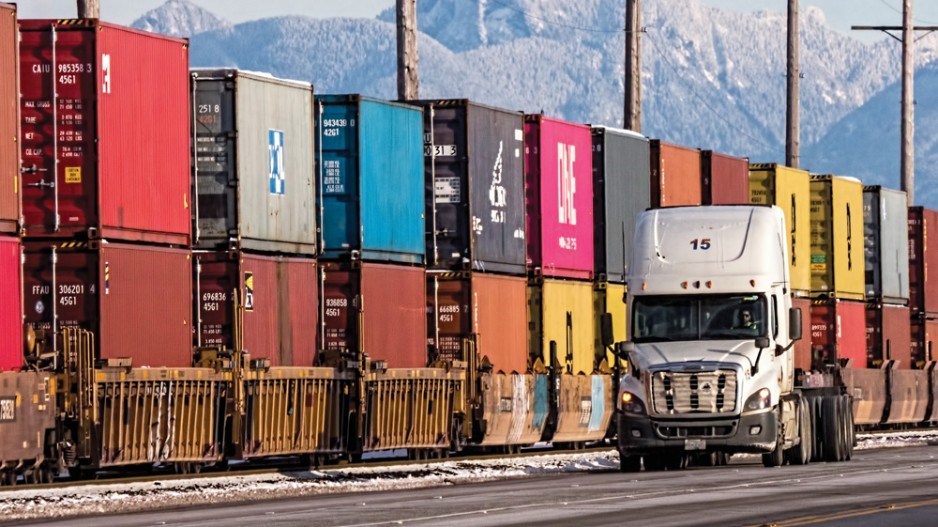For observers of Canada’s 2022 global trade outlook, the picture – while muddied by COVID-19 uncertainty and geopolitical tensions – offers reasons for optimism.
The key, analysts say, is having both an accurate read of the global landscape, especially of where the risks and the rewards are, as well as the urgency to carry out a long-term plan that clearly defines what Canadians want to achieve through trade.
For Omar Allam, director of Deloitte Canada’s global trade and investment group, the knowing where to go and what to do is more important than ever – because 2022 will likely be highly volatile and unpredictable.
“Countries around the world need to navigate beyond short-term thinking and focus on a sustainable, longer-term economic recovery,” Allam said. “2020 and 2021 were about commitments, and now 2022 and beyond is about action, execution and tracking results.”
For Asia Pacific Foundation of Canada president and CEO Jeff Nankivell, the most obvious opportunity – and risk – lies with China. The world’s second-largest economy is increasingly encountering friction with the West due to a number of controversial issues, including the three-year Meng Wanzhou affair.
Beijing has also suppressed democratic movements in places like Hong Kong and Xinjiang while continuing to butt heads with the United States over leadership in global and international affairs. Recent surveys by polling organizations have Canadians’ positive feelings towards Canada’s No. 2 trading partner at an all-time low.
But Nankivell noted that bilateral trade between Canada and China has increased during the COVID pandemic, despite icy relations between Ottawa and Beijing. While Nankivell emphasized that diversification of Canada’s trade markets is key, any road map without a plan of doing business in China isn’t realistic.
“[China] is a risky market, and it’s gotten riskier in the last few years,” Nankivell said. “And that’s another reason businesses need to be talking to other businesses about their lessons learned.… Clearly, we need to invest more on a long-term basis as a country on what we call Asia competency for things like Asia-focused school curriculum and access to instruction in the leading languages of Asia.
“Yes, there is uncertainty on how open the People’s Republic of China will be to visitors from abroad once the Olympics are over, and that is a question mark. But I think some things are fairly dependable, and one is that China will continue to be a significant growth market in the world. China’s economic growth will continue … and if you are a Canadian business looking around the world to see where the growth will be in the next three to five years, there’s no question China will be absolutely a top market.”
Canada West Foundation Trade & Investment Centre director Carlo Dade agreed, but he also noted that any Canadian plan for engaging China needs to keep Washington’s stance in mind because the United States still dominates Canadian businesses’ overseas trade and investment.
With U.S.-China rivalry not abating despite a switch to the Joe Biden administration in the White House, Dade said Canada risks being caught in the middle if Canadians do not position themselves carefully.
To diversify, Canadian Prime Minister Justin Trudeau said late last year, that Ottawa will seek a new trade pact with the Association of Southeast Asian Nations (ASEAN) – which many observers feel is another major market on the rise that may mitigate U.S. and Chinese domination of Canadian trade.
Perhaps surprisingly, Nankivell said, the COVID pandemic may have given Canada an unusual boost when it comes to trade links with ASEAN. He noted that the two regions are geographically extremely far apart, and any trade shows and relationship-building requiring physical face-to-face contact usually put Canada at a disadvantage in Southeast Asia when compared with efforts from markets like Japan, South Korea, Australia and New Zealand.
With most events now virtual, however, Canadian players seeking business opportunities in Southeast Asia could now have equal footing, Nankivell said.
But Dade noted that Canada may run into issues in markets like the Philippines and Myanmar in pushing progressive trade agendas.
He said it may behoove Ottawa to put more focus into the Comprehensive and Progressive Agreement for Trans-Pacific Partnership, because its members are already part of an advanced trade bloc that includes Canada, Japan, Australia, Vietnam – and soon – Great Britain.
There is another pressing need closer to home that must be addressed in 2022, Dade said: trade infrastructure.
“Our rankings have been falling through the floor, and we haven’t paid attention. But our foreign customers know; they are the people voting to say we need to look at our infrastructure. Eventually, that will come back to bite us – the fact that our customers are telling us they don’t trust us to get our products to them, and at the same time having us depend on exports to the degree that we are. That’s a problem.
“We need to look at the entire system and come up with a data-driven, rational plan based on the national interest, fitting the pieces together to make a coherent whole. We are running around doing shovel-ready projects instead. As long as we do shovel-ready and not shovel-worthy projects, we are going to be funding stuff that may not make sense because they solve an immediate problem but make a larger problem worse.… Shovel-ready is a sign of failure.”
Allam said that what’s ultimately needed in 2022 on the trade front is long-term vision and the willingness to act to get there.
“In response to immediate pressures, Canada needs to go on the offensive to succeed in existing international markets and diversify into new regions,” he said. “We need to build on existing successes and set ambitious targets for Canada’s exports, foreign direct investment, tourism and international education.
“We face challenging times, but Canada brings considerable strengths to bear that will allow us to navigate these challenges. We have a remarkable track record of responding to changing circumstances.” •




